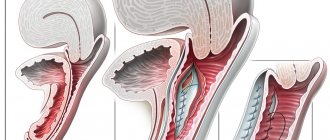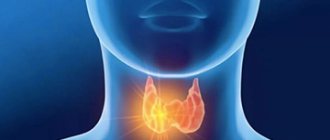Price
240 000 ₽
Surgery: longitudinal resection (sleeve resection/drain)
What is included in this price:
All necessary tests
Preoperative preparation
Stay in a 3-bed room in a hospital (TV, shower, toilet, air conditioning). It is also possible to stay in single and double rooms for an additional fee.
Three meals a day
Operating team consisting of: Boris Yuryevich Tsvetkov, two assisting surgeons, operating nurse, anesthesiologist
The operation is performed laparoscopically. German expert-class equipment KARL STORZ is used
American-made staplers Johnson & Johnson
Inhalation anesthesia is non-toxic and safe. Imported drugs are used for anesthesia. The active effect of anesthesia stops 30 minutes after surgery. The patient comes to his senses. Residual effects are mild drowsiness. Can last up to 2 hours
Postoperative period: dressings, systems, consultations
Extract with written recommendations from the doctor
Consultation with a doctor within one year after surgery
Reviews
- Review by Anton Nikolaevich Logvin
The operation was performed 6 years ago. Weight was 175. My knees started to hurt. It was impossible to find clothes. Constant feeling of hunger. Now I weigh 110. The weight suits me. I don't want to lose weight anymore. Boris Yurievich Tsvetkov is a surgeon from God, a very decent person and a wizard, an architect of human bodies. I'll say this.
Photos and interviews
- Review by Olga Vladimirovna Ryabokon
Before the operation, the weight was 154 kg and there were a million concomitant diseases. Now 87-88. I’m no longer treating diabetes, it doesn’t bother me, my blood pressure is very rare. At 64 years old, I don’t walk, I run. Before, I couldn’t walk through the kitchen; I was out of breath.
And after me, my daughter also had the same operation. All the best that I can, I know, all the good words, I dedicate everything...
Photos and interviews
- Review by Irina Sergeevna
Thank you very much to Boris Yuryevich for the gift of a new happy life, with all my heart. I say that I celebrate the day of the operation as my second birthday. My life has changed, my mind has brightened, my soul has brightened, I don’t know, it’s as if I’ve actually become younger. I was 44, now I’m 45, a new life has begun. Thanks to him for his golden hands, thanks to the whole team...
Photos and interviews
- Review by Marina Konstantinovna and Nate Donelson
I would like to express my deep gratitude to Boris Yuryevich and his entire team. The man who changed my life, who changed my husband's life, who saved my husband's life. I am very grateful to him. We are now planning a second child. He may have saved another life. We will have a second child, and at my former weight I could not give birth.
This is a surgeon...
Photos and interviews
- Review by Alexander Semchev
Friends! Previously, some time ago, it was difficult for me to live because the moment of my “promiscuity” played a bad joke on me. But, thank God, Dr. Tsvetkov and his clinic appeared in my life. Thanks to his efforts, his attention, I began to live differently. Of course, with a plus sign.
Photos and interviews
- Anna's review
I would like to say a huge thank you to Boris Yuryevich. He told me everything about the operations competently and in a language that I could understand, where there were any pros and cons. He gave me comprehensive answers to all my questions. He is a professional with extensive experience whom I trusted. I can say one thing. That this is a person who tells patients it like it is, in simple language accessible to...
Photos and interviews
- Review by Tatiana
Boris Yuryevich is a great guy, of course. Attentive, he told me everything that interested me. I walked differently from Marina, for example. Marina probably teased him for a very long time; he probably told a lot of things for a long time. I flew on wings. Everything would have been done faster for me. But what interested me, for example, the same operation, what to do...
Photos and interviews
- Alina's review
Boris Yurievich Tsvetkov is truly a doctor of the highest category, who is adapted for people. All people are different. Some work for their own personal gain. And Boris Yuryevich works for the people. It is available 24/7, which was very important to me. That I could call him at night and say: “Boris Yuryevich, I’m not feeling very well.” He always…
Photos and interviews
- Olga's review
Thanks to Boris Yuryevich for making people beautiful and happy. I already told him that I really have become more beautiful, younger, and much happier. I would like to wish him long life, even more career growth, newer modern technologies.
It's too bad he doesn't do breasts. It does the stomach, but he says I don’t do the chest now. And that’s what I would do...
Photos and interviews
- Valeria's review
I had gastric resection surgery and I am very pleased. What happened before and what happened after is noticeable in life, in health, in everything. A person changes - this is a new life. There is no need to be afraid of this operation, you need to go and do it. Boris Tsvetkov is a worthy, high-quality surgeon who will care for and guide his patient from beginning to end. In the hospital…
Photos and interviews
- Feedback from Natalya Anatolyevna Kukshina
I am a person who, at the age of 26 (at the time of the operation), has experienced a lot - various cleansing programs, nutritionists, fitness programs for losing weight, buying and consuming tons of products, as advertising aimed at weight loss instills in us, I can only say one thing. If you have problems with excess weight, diseases caused by excess...
Photos and interviews
- Alexey's review
What Boris Yuryevich Tsvetkov did... I want to say frankly. Without praising him, nothing, simply, what Tsvetkov did - he simply did what is impossible to do, you know? Tell someone else. I talked with other doctors, with endocrinologists, with therapists, there are a lot of people we know in medicine. Even people who are in this profession…
Photos and interviews
Preparation for surgery and resection technique
Patients without concomitant pathologies and hyperobesity undergo a routine examination. You can take a biochemical blood test, a clinical urine and blood test, and an ECG in our hospital the day before the operation. Additional examinations are prescribed individually according to the doctor’s decision.
During laparoscopic surgery:
- Most of the stomach is removed, leaving the physiological valves intact.
- An even narrow sleeve is formed using a special probe.
- The reserved area is retrieved.
The operation is safe, does not exclude the stomach from the digestive process and allows for a quick recovery. The patient remains in our hospital for 5 days after resection. For accommodation, you can choose a room with all amenities for one, two or three people.
Principle of the technique
Using a silicone ring, the stomach is divided into two sections according to the hourglass principle.
The volume of the upper part is made ~20-30 ml. The small volume is quickly filled with a small portion of food, after which the brain receives a command about saturation. Food slowly moves through the stomach through a narrowed opening in the band area, and the person feels full for several hours. As a result, the amount of food consumed can be reduced several times - to the minimum physiological norm. The inert biocompatible material of the bandage is not perceived by the body as foreign and does not cause rejection or negative side reactions.
Our hospital
Results of longitudinal gastrectomy
Longitudinal resection is effective and is performed in a large number of patients. In the first six months, you actively lose up to 70% of excess body weight and continue to gradually lose weight over 1-2 years until your weight stabilizes.
In case of insufficient weight loss results, the operation is supplemented with gastric bypass. This applies to cases that occur in 12-20% of patients - the stomach stretches and the person begins to gain weight.
A striking example of effectiveness is a 44-year-old man with severe shortness of breath and heart failure, who, with a height of 180 cm, weighed 278 kg. At the first stage after the installation of the intragastric balloon, he lost 20 kg. After resection, the weight stabilized at 120 kg, which allowed the person to live a full life today.
How is the balloon removed?
The balloon is also removed using an endoscope and specially designed instruments. This procedure lasts approximately 15-20 minutes, but usually requires light intravenous anesthesia.
Is there a risk of weight regain after balloon removal?
Yes, because after removing the balloon the patient is left “alone” with his old stomach. Obesity is a lifelong disease, and lost weight may begin to be restored if the patient does not get used to eating restricted food over the next six months. The training conducted during the treatment period aims to develop rules of behavior for the patient after removal of the balloon.
Popular questions
Before surgery
With what weight can this operation be performed?
This operation is based not on weight, but on body mass index (BMI). Body mass index is calculated using the formula “body weight divided by height squared.” We are starting to offer longitudinal gastrectomy to patients with a body mass index of 35 and above.
Body Mass Index (BMI) Calculator
Weight, kg:
Height, cm:
BMI:
What contraindications may there be for longitudinal gastrectomy?
Peptic ulcer disease in the acute stage, mental disorders (schizophrenia) or acute - myocardial infarction and other exacerbations of the condition, for which a decision is made individually.
Is it possible to do another type of surgery at the same time as resection? (for example, remove a gallbladder, cyst, fibroid, etc.)
It is not only possible, but also necessary. If a patient has stones in the gall bladder, then we offer them the so-called “simultaneous surgery,” that is, surgery on two or more organs. This is removal of the gallbladder and longitudinal resection of the stomach. They can be different, for example, uterine fibroids.
Are there any age restrictions for this operation? Is it possible to perform a gastric resection on a child?
In the world, this operation is performed from the age of 8 years, but only for children with enormous weight, approximately 170-180 kilograms. The decision is always made individually. We have had patients in our practice for 14 years or more.
If there are problems with hormonal levels, will it be possible to have a drain?
As a rule, hormonal problems are secondary in such patients; obesity is primary. The exception is Itsenko-Cushing syndrome (adrenal insufficiency) - this is a contraindication to our operations. All other hormonal disorders (pituitary adenoma, etc.) most often disappear after surgery.
Are there any dietary restrictions before surgery?
Sometimes this operation is performed with enormous weight, in which case we prepare our patients for the operation within 2-3 months. The point of this preparation is for the patient to lose at least 10-20 kilograms in order to reduce the size of the liver. Sometimes a huge liver prevents us from performing an operation. 90% of our patients are patients with a body mass index from 35 to 50. The weight is large enough, but special preparation is not required.
What tests will need to be taken before the operation and will it be possible to take them in your clinic?
We do not send our patients to laboratories; all tests are performed in the clinic. Usually, after the day of hospitalization is determined, they come to us on an empty stomach. We conduct an examination in exactly one day and operate on the next day. This is included in the cost of hospitalization.
What additional health benefits does resection provide?
Positive effects include remission of not only weight, but also its accompanying pathology. This may be diabetes mellitus, menstrual irregularities, dysfunction of joints, especially knee and hip joints, hypertension. Curing diabetes, reducing blood pressure in hypertension, or reducing the load on joints is colossal. This sometimes saves the patient from the need for joint replacement in the future.
Are any benefits possible under compulsory medical insurance?
These operations, in principle, are not performed under compulsory medical insurance, unfortunately, so there are no benefits here.
During surgery
What is this operation?
The operation is aimed at reducing the volume of the stomach. We do it laparoscopically, through four small punctures. The essence of this operation is that we reduce the volume of the stomach many times. The volume of the stomach remains only 60-80 ml, the diameter of the stomach is no more than 14 mm. With this volume, the patient does not feel hungry. The functioning part is sufficient to consume the required amount of calories and maintain a normal, full life without any restrictions.
How long does gastrectomy surgery take?
On average about one hour.
What type of anesthesia is used during surgery?
General anesthesia. General anesthesia using modern means.
Profile diseases
The reason for turning to bariatric surgeons is obesity – a chronic, progressive disease with the accumulation of excess fatty tissue. In women, excess is more than 20-25% of body weight, in men – 10-15%.
Obesity is caused by many factors and is both a consequence and a cause of the development of chronic diseases.
Obesity is a risk factor for the development of hypertension, pathology of the cardiovascular system, leading to arterial hypertension, functional and organic changes in the heart, central nervous system and kidneys. A person with high blood pressure experiences headaches, tinnitus, palpitations, shortness of breath, pain in the heart, etc.
Obese patients develop dyslipidemia, a metabolic pathology caused by an imbalance of lipid fractions in the blood and the gradual accumulation of fats in the body. Further, atherosclerosis and related diseases (strokes and heart attacks) develop or progress.
Obesity often accompanies insulin resistance. Insulin resistance is a condition in which the ability of insulin to stimulate the supply and utilization of glucose in cells is impaired, and, consequently, to implement antilipolytic activity at the level of target tissues (skeletal muscles, adipose tissue, liver). Type 2 diabetes mellitus develops.
Fatty liver disease (EAFLD) is a non-alcoholic fatty liver disease that develops in the context of obesity and poses a significant health threat. The disease occurs due to excessive accumulation of fats in the form of steatosis in the liver of people who practically do not drink alcohol. NAFLD among obese patients is 75%. With morbid obesity, the number of patients with NAFLD increases to 90%. In 25% of cases, non-alcoholic steatohepatitis develops, leading in 2-3% of cases to liver cirrhosis.
Gastroesophageal reflux disease (GERD) develops, incl. and against the background of obesity. With this disease, inflammation of the walls of the lower esophagus occurs as a result of regular reflux (backward movement) of gastric or duodenal contents into the esophagus. With GERD, patients experience such unpleasant sensations as heartburn, belching with a sour or bitter taste, pain and difficulty swallowing food, dyspepsia, chest pain. Symptoms worsen after eating and exercise.
Also, treatment of obesity will help get rid of or prevent the development of diseases such as cholelithiasis, sleep apnea, arthrosis, and sexual dysfunction. Treatment of obesity also helps to resolve psychological issues.










